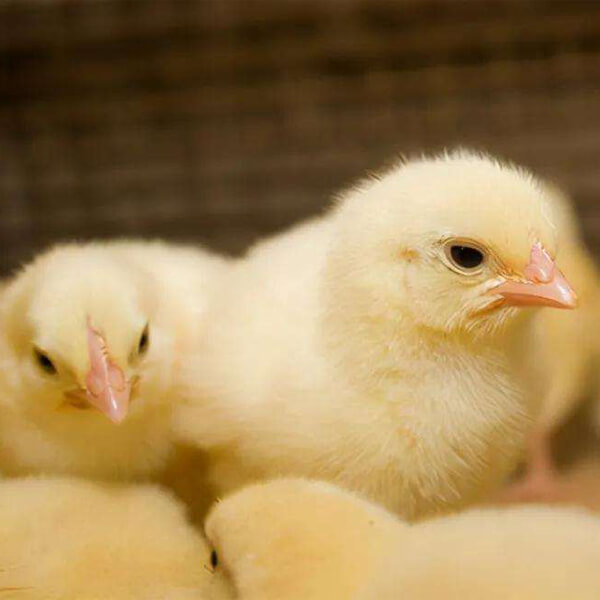Breeding environment monitoring has a great influence on the growth of poultry. Changes in factors such as temperature, humidity, carbon dioxide, and ammonia in the environment will directly affect the growth and reproduction of livestock and poultry. Take chicken farming as an example. The climate is cold in winter, and the reduction of humidity in the air can easily bring adverse effects on the growth of chickens. Through the use of the Internet of Things and sensor technology to monitor the environment of the chicken house and scientific management, it is an important means for farmers to manage the environment of the chicken house scientifically.
Let’s take a chicken house as an example to explain the composition and application of poultry environmental monitoring in detail:
What are the components of a poultry farming environmental monitoring solution?
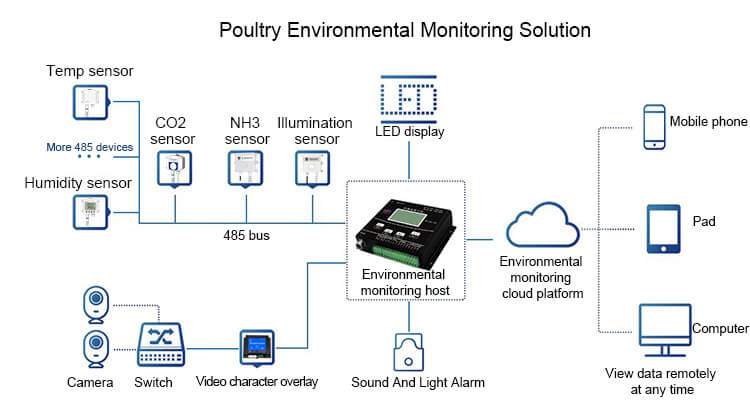
Part 1: Environmental Monitoring System
The environmental monitoring system is responsible for monitoring the breeding environment and is mainly composed of various sensors:
- Temperature and humidity sensor: real-time monitoring of temperature and humidity in the chicken house to ensure that the chickens are in a suitable temperature and humidity environment for growth.
- Illumination sensor: monitor the light intensity in the chicken house to ensure the normal development of the chicken.
- Carbon dioxide sensor: accurately monitor the carbon dioxide concentration in the chicken house, improve the production capacity of chickens, and reduce the incidence of disease.
- Ammonia sensor: monitor the concentration of ammonia in the chicken house to avoid the prevalence of respiratory diseases in chickens caused by excessive ammonia concentration.

Part 2: Video Surveillance System
Install cameras in the breeding environment, upload the video images of the breeding environment to the remote monitoring platform in time, and understand the growth dynamics of animals remotely in real time. It can also be prevented in advance, and has a deterrent and warning effect on criminals. If theft happens unfortunately, clues can be traced afterwards to provide evidence for the detection of the case.
Part 3: Remote Monitoring Platform
The remote monitoring platform is a web login platform that can access the monitored data and video monitoring screens in the environmental monitoring system, and remotely view the information in the breeding environment. At the same time, the remote monitoring platform also has functions such as online data viewing, historical data viewing, historical data analysis, dynamic growth analysis, intelligent alarms, equipment linkage, and account classification.
Part 4: Automatic control equipment

Once the platform monitors that the oxygen concentration in the breeding environment is too low or the concentration of toxic gases such as carbon dioxide is too high, it can automatically control the fan to ventilate the breeding environment, and it can also control equipment such as heaters and wet curtains to provide animals with suitable Growth environment.
Sensors of the poultry breeding environment monitoring solution:
Changes in the temperature and humidity of the chicken house environment affect the healthy growth of the chicken flock. Poultry do not have sweat glands. If the temperature rises, their own body temperature will also increase. They can only adjust their body temperature by breathing to increase evaporative heat dissipation and drinking a lot of water. This will cause their feed intake to decline and lead to a decline in production performance. If the temperature in the house is too low, the flocks are likely to get cold, resulting in a decrease in resistance, causing respiratory diseases or diarrhea.
If the humidity in the chicken house is too low, it will cause dust in the chicken house to fly, and the chickens are prone to respiratory diseases, and the phenomenon of pecking at the anus will also occur; but too high humidity will easily cause the poultry’s ability to regulate and cause various diseases and increase. Weight slows down and egg production drops.
The wall-mounted temperature and humidity sensor with a waterproof probe can realize 24-hour monitoring of the temperature and humidity in the chicken house. The overall shell is waterproof and dustproof, and can be used for a long time in the poultry breeding environment. The built-in sensor works stably and does not require frequent calibration. And the measurement process will not be disturbed by other gases.
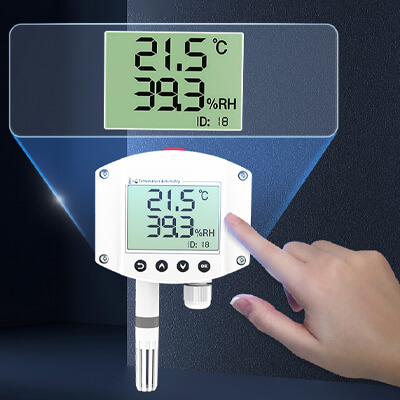
Using RENKE temperature and humidity transmitters in the chicken house can help the breeders understand the temperature and humidity environment in the chicken house in real time, and provide a basis for timely adjustment of the environmental conditions of the chicken house, which can prevent the temperature and humidity in the chicken house from rising and falling. Circumstances, to ensure the healthy growth of the chickens, can also further improve the scientific management level of the chicken coop, and increase the economic benefits of the farm.
The effects of carbon dioxide concentration at different stages of the incubation period on embryonic development and chick quality. Gradually increasing the carbon dioxide concentration to above 1% 10 days before hatching will have a positive impact on the relative growth of the chickens in the first week after hatching, but will not increase the slaughter weight. However, chicken embryos can tolerate high concentrations of carbon dioxide (4%) between the 10th and 18th day of incubation without affecting the quality of the chicks.
After the chicks grow for a period of time, the concentration of carbon dioxide in the chicken house needs to be reduced. Although carbon dioxide itself is not toxic, long-term growth in chicken houses with high concentrations of carbon dioxide may reduce the growth performance of broilers and endanger the health of broilers. When the carbon dioxide concentration in the chicken house is too high, the oxygen concentration in the chicken house is too low, and the lack of oxygen in the chicken house will cause chronic toxicity, which will reduce the chicken’s appetite and weaken the body.
We have specially developed a co2 sensor for the chicken house environment. The housing of this co2 sensor is waterproof housing to ensure that it can work normally when the chicken house is sprayed with water. It adopts wall-mounted or buckles installation, which is easy to disassemble. Its measurement range is 0-5000ppm, and it can work in a high-concentration carbon dioxide environment for a long time, with high accuracy, and is not affected by other gases. There is no need for frequent calibration, just get the outdoor calibration once after the end of a measurement period.
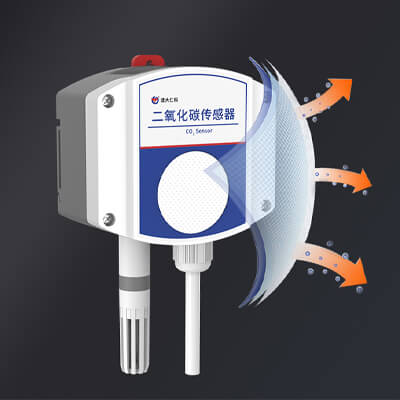
Ammonia sensor
Ammonia is also an important part of the environmental monitoring of chicken houses. Even if the concentration of ammonia in chicken houses is only 5ppm (which is difficult to detect by the human nose), it can stimulate the respiratory mucosa of chickens and make them more susceptible to diseases. Ammonia will dissolve in the liquid around the chicken’s eyes and cause strong irritation. Too high a concentration will make the chicken’s eyes blind. When the ammonia concentration in the chicken house reaches 20ppm and lasts for 6 weeks, it will cause the chicken’s lung congestion and edema, and the egg production rate of the chicken will be reduced; when it reaches 50ppm, it will cause the chicken to develop laryngeal edema, necrotizing bronchitis, and lung a few days later. Bleeding, reduced breathing rate, and death.
The ammonia sensor is a common tool for measuring the ammonia concentration in the chicken house. The wall-mounted ammonia sensor with a range of 0-50ppm can effectively monitor the ammonia concentration in the chicken house environment for a long time. At the same time, the measurement value can be set up through the monitoring platform. The lower limit is used to automatically control the opening and closing of the vent.
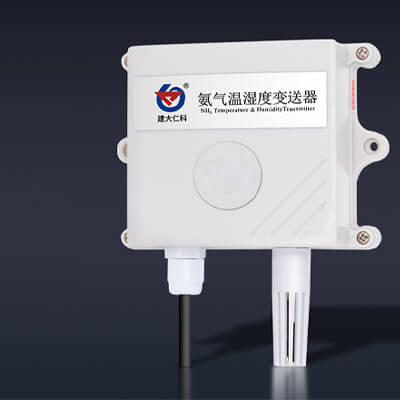
Illumination sensor
Light has a stimulating effect on the gonads and will affect the level of hormones in the chicken. It can effectively control the sexual maturity of the chicken. The good performance of the chicken cannot be separated from the appropriate light. Light intensity and duration of light have the greatest impact on chickens. Too short light time will delay the sexual maturity of chickens in the rearing period, and too long time will make the sexual maturity advance. Therefore, in order to stimulate the chicken’s appetite, promote growth, and increase the egg production rate, the light time and the light intensity can be appropriately extended. However, light also has a certain negative effect on chickens, and light can affect the quality of eggs by affecting the morphology of the chicken’s fallopian tubes.
By using the illuminance sensor to monitor the lighting situation in real time, and by measuring the upper and lower limits of the set value, the lighting equipment is controlled to be turned on and off.
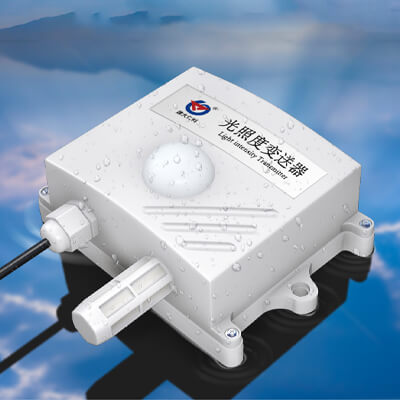
What are the advantages of poultry environmental monitoring solutions?
Real-time monitoring: Chicken house managers can view real-time environmental data such as temperature and humidity, light intensity, carbon dioxide concentration, ammonia concentration, and hydrogen sulfide concentration in the chicken house through various terminals on the cloud platform.
Intelligent alarm: Both the monitoring host and the cloud platform support setting the upper limit of each environmental factor. If the value of one of the environmental parameters exceeds the limit, the host will report the real-time data alarm through the screen display, and the cloud platform will notify the manager of the alarm information in the form of phone or SMS through the platform display and the mobile phone number added to the platform.
Intelligent control: using advanced industrial automation control technology, once the environmental parameters are determined to exceed the limit, the system will send linkage commands to the M88 module as soon as possible. If the temperature in the house is too low, it will intelligently turn on the heating equipment to increase the temperature in the house.
Data analysis: Support for viewing and downloading historical data and over-limit alarm information records in time periods, and display them in the form of curves to make users look more intuitive.
Conclusion
The intelligent poultry environment monitoring system can create an environment suitable for the growth of chickens. It has monitoring and control functions. With the help of the Internet of Things and sensor technology, it can realize remote management, simple operation and low cost. At present, it is widely used in environmental monitoring of various poultry industries. For different breeding sites, we can provide you with different poultry environmental monitoring solutions, welcome to contact us.

